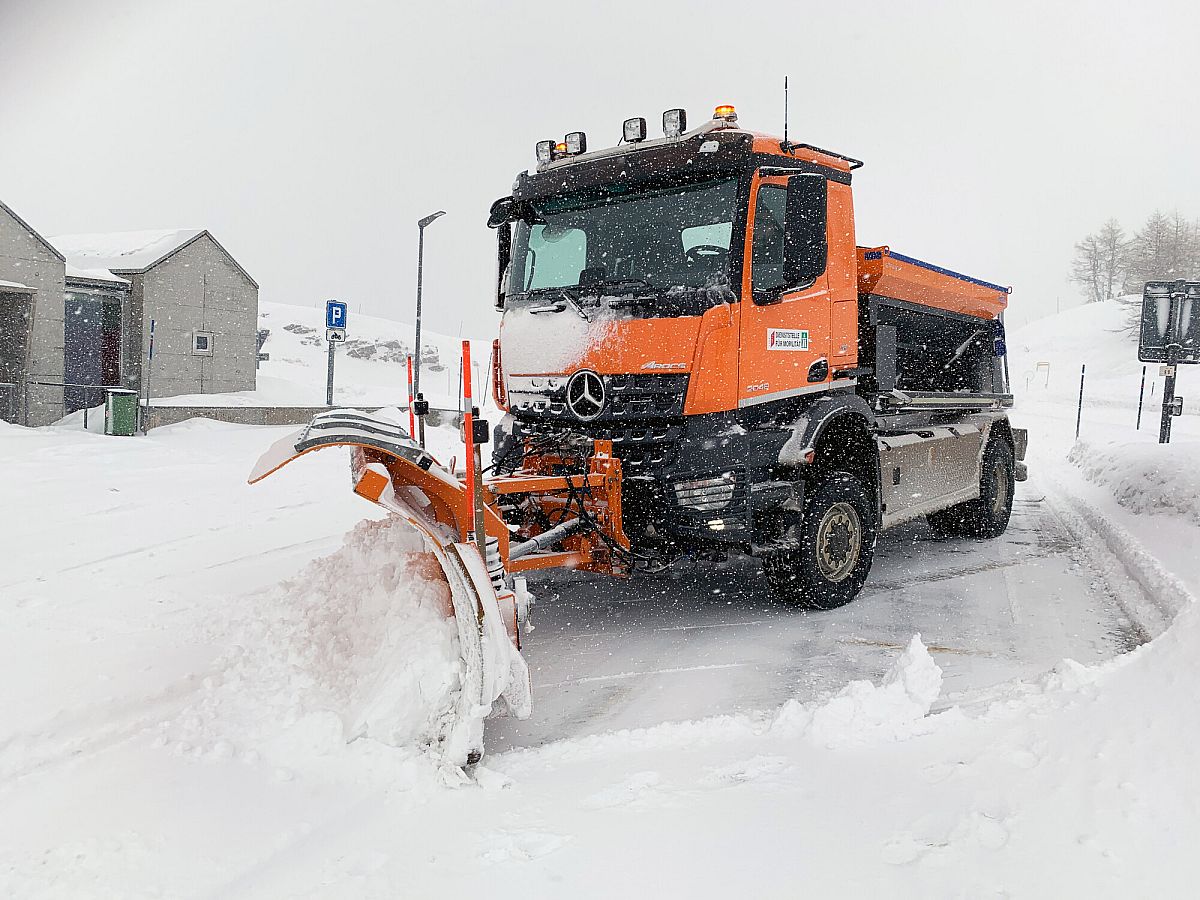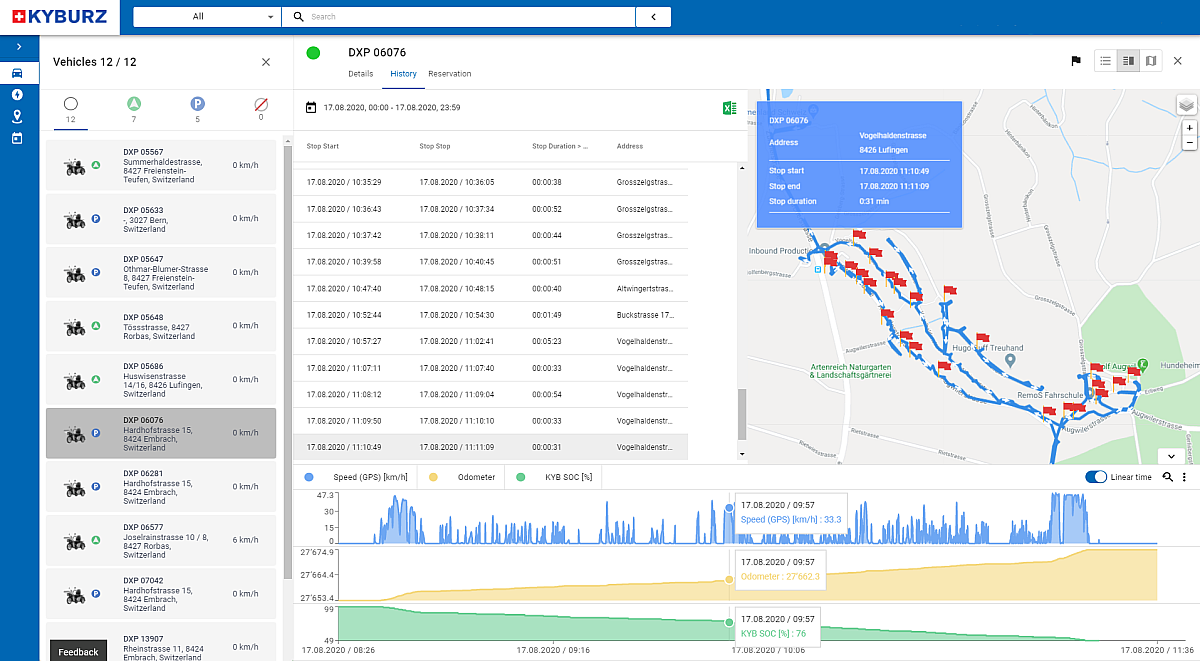Fleet Monitoring

With my first vehicles, all the test drives followed a similar pattern. First, I looked to see if and how well the vehicle handled. Then, I tested the limits, the maximum speed, the acceleration, the ability to cope with hills and mountains, the recuperation effect and the energy consumption. I drove around and saw if any part in the powertrain heated up more than expected and how far I got with the energy stored in the battery. Then came systematic tests. On a pad on my knees, I wrote down all the values I read on the numerous gauges and noted them down for the position I had just driven. With my Cheetah, with which I undertook these measurement trips on the road, the readings were sometimes more interesting to me than what was happening on the road, which led to some critical situations.
The next technological development was a real enhancement. With the help of laptops or small computers and recording devices, I was able to record the readings and concentrate fully on the ride. Then I could read out and interpret the behaviour of the vehicles based on curves. Even today I love measurement curves and always look at the absolute heights and the positive or negative slopes from which I can judge the behaviour.
At a trade fair in Zurich, I met a young doctoral student at the time who was working in statistics and data analysis. He introduced himself as Erik Wilhelm. He developed a first measuring system for me that recorded the position and all the desired technical data locally and transmitted them directly and in real time to my computer. He equipped some vehicles and we made many measurements and discussed the possibilities. Among other things, he developed a patent with which the exact weight of the vehicle including the load could be determined only based on the measured energy values and the reaction of the vehicle. Erik applied for a patent for the method - today, almost 10 years later, we are still in possession of this patent. We were never able to realise the idea, as there was no interest in exact weight determination until then.
I was fascinated by the many possibilities. Fleet - as it was called - was to be used in the future for support and as a communication aid. I had the system installed in all our company vehicles. It went very well with our drivers - except for one. He just didn't feel comfortable being monitored all the time. We had some discussions. We had a switch installed in his car so he could turn Fleet off at any time. We agreed that he could turn Fleet off in his free time, but during his working hours he should leave Fleet on for more than two weeks. I tried to convince him that I didn't want to sit behind the computer all the time to check his driving. He left Fleet running for exactly half a day, after which he turned it off. As a result, he had to leave our company. Not because he didn't want Fleet up and running, but because our agreement was that we would give it a try for those two weeks, and he had breached that agreement.
We changed the system provider and developed our system further. Technical data could be evaluated and the condition of all our vehicles could be determined. We could see the battery status, when it was charged, and in the case of a defect, we could determine exactly when and why something no longer worked exactly as expected. Even with all our vehicles abroad, the system helped us to see what their condition was and what should be considered for repair.
One day we decided internally to offer our Fleet system to other customers. We equipped trucks, snow ploughs, salt spreaders, work machines, bicycles, cars and other vehicles with it. There are a variety of things we can acheiv. We can offer reservation systems, measure the exact energy consumption, and assess driving style. In the case of snow ploughing in the canton of Valais, we create a map for the canton in real time, showing when and where ploughing took place and exactly how much salt was spread. In addition, we have automated the entire accounting of the machines. Whereas in the past reports had to be written by hand and laboriously typed, today the drivers can plough and salt and automatically receive their pay slips at the end of the month.

In the case of trucks, we can automatically read out all the speedometer data, we can determine the diesel consumption, the loaded weight and make an evaluation of the driving style. This way we can see whether a driver is driving safely or not. For customs, we have already made the first attempts to be able to automatically declare the load of a truck via our fleet. Customs can signal to the driver during the journey whether he should approach or stop at customs for a check. This will help to avoid all the traffic jams in the future.
For construction machinery, we can create a virtual fence with "geofencing". In the future, the project planner will draw a virtual fence around his construction site. If a construction machine is in the defined area, the working hours will be written to the project. The whole administration is simplified. Another advantage is that everyone in the construction company can see exactly where which machine is, what its technical condition is and whether it will be available for a short time. In this way, productivity can be increased with fewer machines.
In the meantime, we talk about "Digital Twins". We create an electronic twin of the technical object that we can track on any computer or even on a smartphone. Meanwhile, we have equipped over 12,000 vehicles with Fleet and the future is limitless.
However, I always must deal with the translation between the technical possibilities developed by our Fleet team and the benefits that the customers want. Our team works with constantly evolving technologies and realises what they think possible in the given time. I, however, look for ways to provide simplification and transparency for us and our customers.

I learned from this:
- Collecting data is a limitless task.
- What is technically possible is not always useful for the customer.
- Only what serves the customer is relevant for him.
